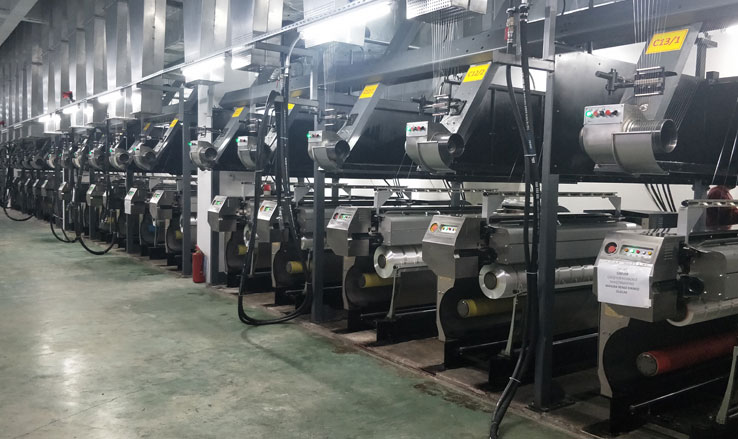
Call Us
+86 18851202565Send Us Mail
[email protected]
Call Us
+86 18851202565Send Us Mail
[email protected]Solution
Bicomponent fibers are two or more polymer melts, split by a special distribution plate, and extruded through the same spinneret hole. There are hundreds of types of Bicomponent fibers, and there are many classification methods. According to the production method, they can be divided into composite spinning and blended spinning.
According to the spinning form, there are 5 commonly used types: co-spinning, side-by-side, skin-core, Splinter type, and island type. Polyester spinning /Nylon Bicomponent fiber, not only has the advantages of Nylon's wear resistance, high strength, easy dyeing, and moisture absorption, but also has the advantages of good Polyester elasticity, good shape retention, stiffness, and non-ironing.

| Material | PET /PA6 PTT/PET |
| Denier(D) Range | 50-600 |
| Process speed | 3200m/min |
| NO. of Positions | 6 / 8 /10 / 12 positions(customized) |
| NO. of ENDS | 8 /10 / 12 ends(customized) |
| Winders | Automatic |
| Grade class rate | up to grade class rate ≥98﹪, first-class rate ≥95﹪, full package rate≥90﹪ |
Generally, the Bicomponent spinning is mainly composed of polyester & nylon, with orange petals, rice-shaped, and other special-shaped cross-sections, and has good moisture absorption. Bicomponent Yarn is mainly used in cleaning products, home textile products, etc. In addition, the low melting point, flame retardant, antistatic, and conductive functions of many fibers are also achieved through the special structure of composite spinning.
Application Situation of Polyester/Nylon Bicomponent Micro Fiber: